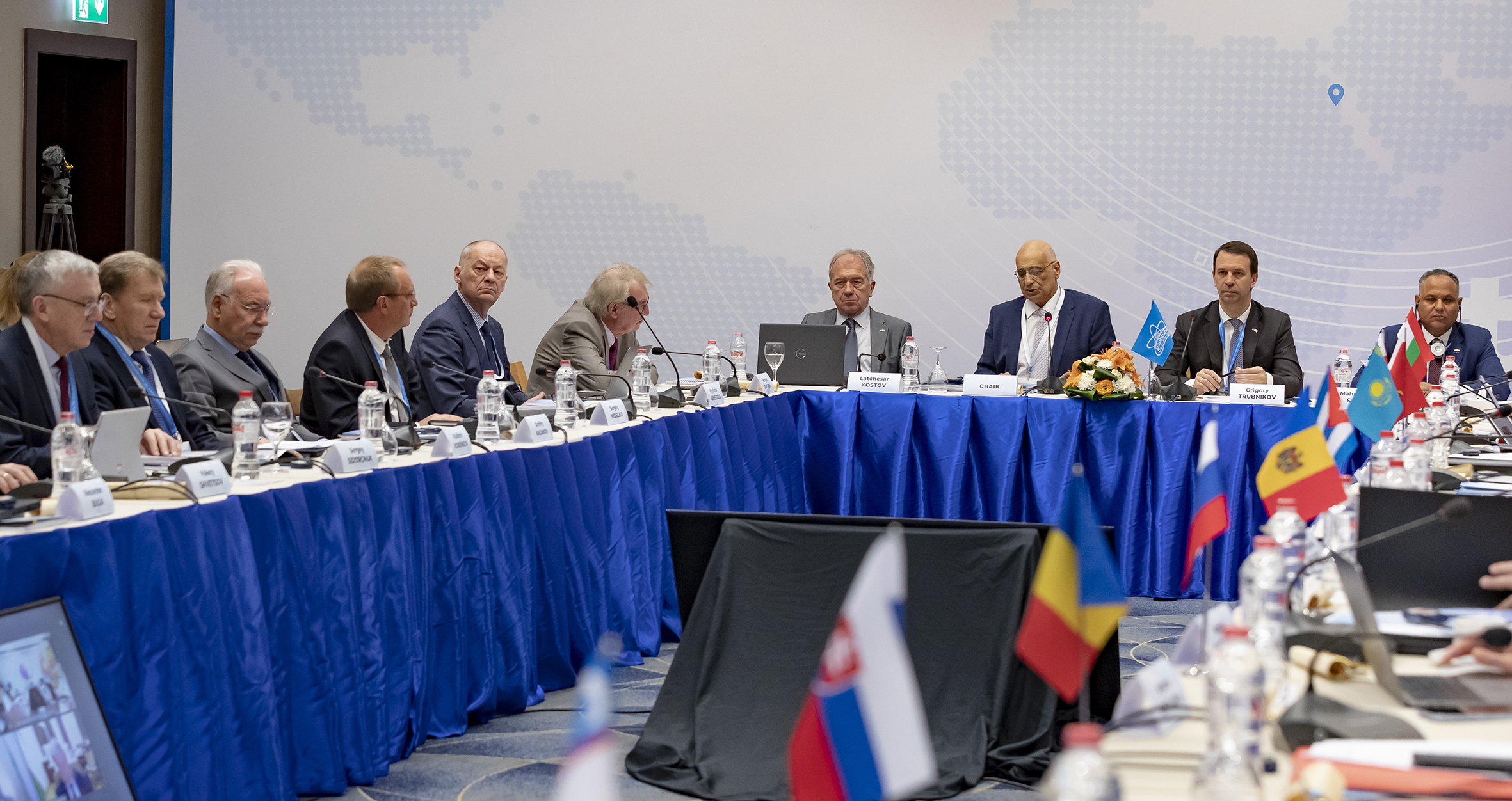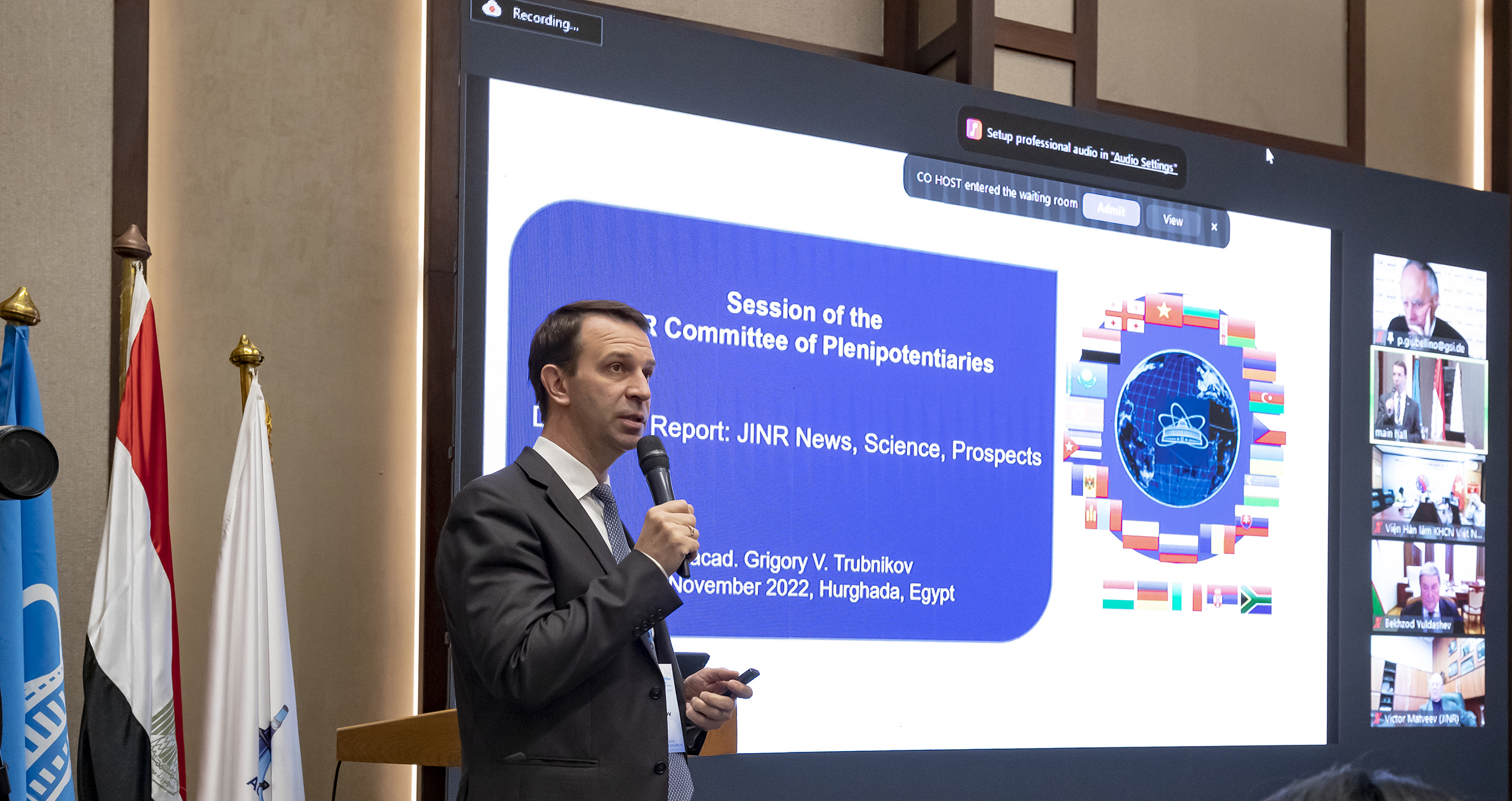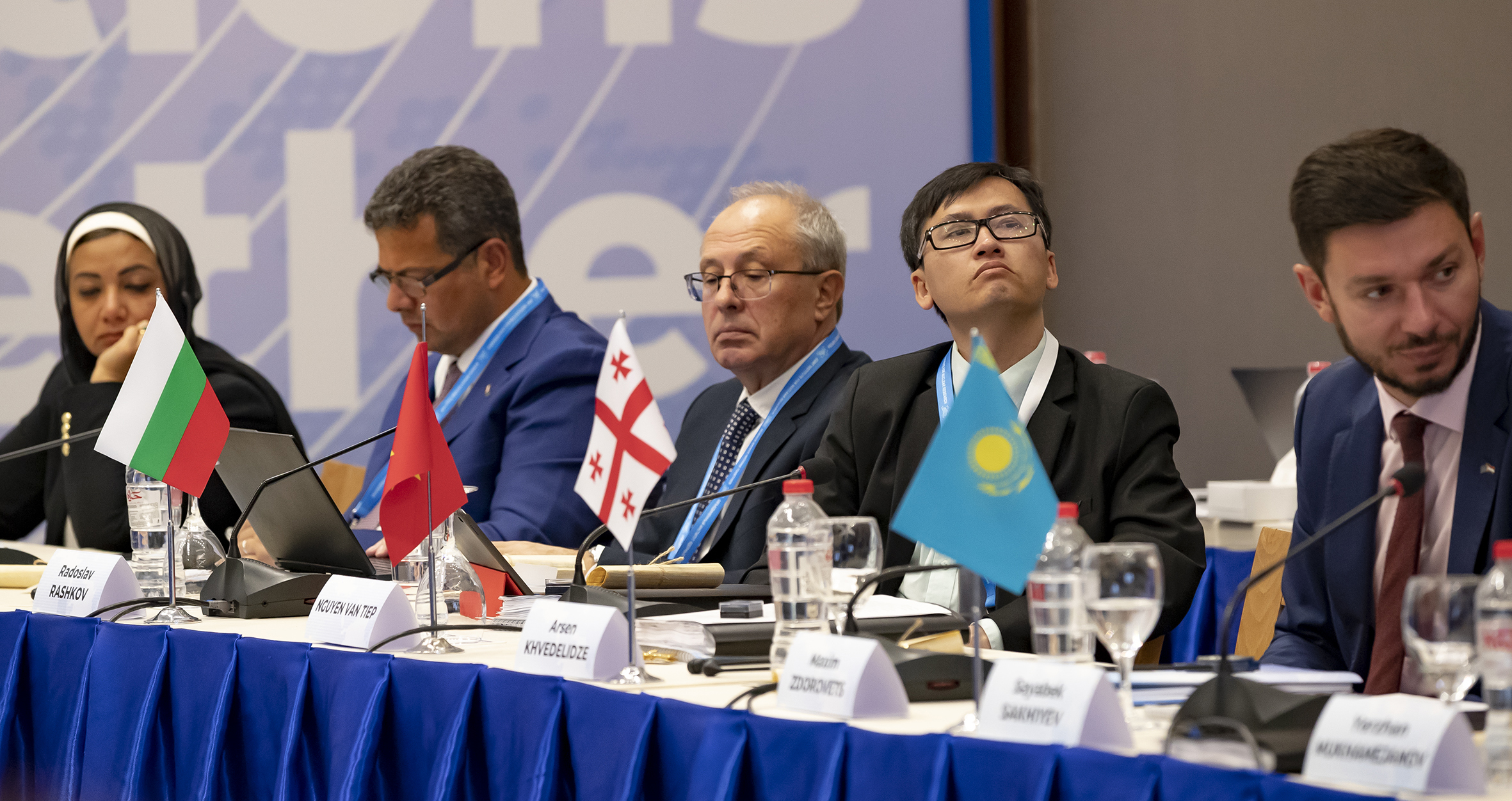Seven-Year Plan for the Development of JINR in 2024 – 2030 presented at CP JINR session
News, 23 November 2022
Today, on 23 November, at the session in Egypt, JINR Director Grigory Trubnikov for the first time presented to the Plenipotentiaries of the JINR Member States the draft of the Seven-Year Plan for the Development of JINR in 2024 – 2030. The Members of the Scientific Council approved the draft at the session in September. According to the new Plan, the basic scientific infrastructure projects of JINR harmoniously complement the global landscape of the megasience infrastructure.
The JINR Director reported on the results of the session of the Scientific Council held in September 2022, at which participants evaluated the scientific programme of the Institute and analysed its plans. For the first time, the draft of the Seven-Year Plan for the Development of JINR in 2024 – 2030 was presented at the session. The members of the Scientific Council approved the draft and highly appreciated the ambitious scientific plans included in the document. “It is necessary to better synchronise the new plan with the strategic plans of international organizations such as the Nuclear Physics European Collaboration Committee (NuPECC) and the International Union of Pure and Applied Physics (IUPAP),” the speaker noted.
Grigory Trubnikov also highlighted the issue of prioritising projects and outlined possible risks in the implementation of the designed plans. The Topical Plan for JINR is being updated in parallel with the change in the structure of the Institute’s budget. “The progress that the Institute has achieved so far in all its projects and research confirms that JINR is in good shape. The Institute is ready and capable of implementing the ambitious programme of the new Seven-Year Plan,” Grigory Trubnikov emphasised.
In his report on the state of the art at the Institute, the Director noted that JINR has been very actively financing the basic facilities and laboratory equipment over the last few years. In addition, the JINR partner network all over the world is expanding. Today, it consists of more than 1,000 organizations. Exchanges of visits, openings of Information Centres, holding conferences not only on the platform of the Institute, but also at partner organizations contribute to it among other things. Speaking about international cooperation, Grigory Trubnikov particularly noted the development of joint projects with Egypt, the host country of the CP session. The country is joining the Institute’s activities with renewed vigour. It will be discussed in more detail at the meeting of JINR-Egypt Joint Coordination Committee on the sidelines of the CP session.
Grigory Trubnikov presented the scientific results of the Institute during the year. The Laboratory of Theoretical Physics is actively working in all research areas. A particularly striking BLTP’s result of the year has become an evidence of the failure of the assumption about the prohibition of the existence of sterile neutrinos. Scientific groups of the Laboratory have proved the great data reliability of long-baseline neutrino experiments.
Specialists of the Laboratory of High Energy Physics have installed more than half of the magnets in both arches in the tunnel of the NICA Collider. In addition, they are preparing to install magnets in straight sections. At the same time, the fourth commissioning cycle is underway at the NICA Injection Complex. Yesterday, its participants obtained an important result – the first circulation of xenon ions in the high-intensity Nuclotron in the history of the project. The run at the BM@N facility will last until mid-January 2023. Participants of the project will be able to start collecting data soon. The work at the MPD facility has been significantly progressed: the magnetic part of the facility has been fully assembled, the magnet yoke is ready. The project team have assembled a system for cryogenic magnetic tests on the top platform of the detector. The collaboration of the experiment is expanding. A prestigious journal has issued its first scientific article. The SPD collaboration has been formed and is working on the technical design of the facility.
The SHE Factory is successfully operating at the Laboratory of Nuclear Reactions, at which three new isotopes have been discovered this year. The Laboratory’s specialists are going to start synthesizing 112 and 114 elements to study their properties. The regular Baikal expedition was successfully completed in the spring. The Baikal-GVD collaboration has deployed two new clusters of the neutrino telescope. Participants of the collaboration are collecting experimental data. They have discovered 25 candidates of high energy neutrinos. The Baikal-GVD neutrino telescope, the largest one in the northern hemisphere, is part of the Global Neutrino Network (GNN).
Specialists of the Laboratory of Neutron Physics have updated the contour heat exchangers of the IBR-2 reactor and a spectrometer system. The reactor is expected to resume operation in October next year. In addition, they actively discuss the draft of the future NEPTUNE reactor, which will replace IBR-2 in the 2030s. In addition, JINR Director Grigory Trubnikov particularly noted the applied research of the laboratory, which its employees are conducting at the new Xeuss 3.0 X-ray scattering station. The unique facility also attracts scientists from partner institutes.
The Laboratory of Radiation Biology has received the SARRP (Small Animal Radiation Research Platform) X-ray irradiation facility this year. There are no such facilities in any JINR Member States. Thus, it will be an excellent platform for new contacts and research. Moreover, LRB together with the Laboratory of Information Technologies has developed a bio-information system and already put it into operation. The system will significantly simplify data processing in radiobiological experiments. Life sciences and an innovative programme are actively being developed at the Institute.
The Tier-1 IT Center of MLIT JINR is a leading center to process data of the CMS experiment at CERN. The same center will be organized for the NICA Megascience Project. Recently, a presentation of the upgraded JINR “Govorun” supercomputer was held. At present, the performance of the supercomputer has reached the 1,1 petaflop level. Quantum computing and technologies, as well as machine learning are becoming one more advanced area of activity of JINR Laboratory.
Active work is underway in side international projects with the JINR participation. JINR continues fulfilling its obligations in the ATLAS, ALICE, and CMS projects at the Large Hadron Collider at CERN. Institute’s scientists develop photoelectronic multipliers and unique power sources for the JUNO experiment.
The number of publications by the JINR staff in highly rated international journals is growing. The number of defenses of candidate and doctoral dissertations has been increased. The Dissertation Councils have been modernised this year and got new specialities – “Low temperature physics” and “Physics of atomic nuclei and elementary particles, high-energy physics”. JINR will continue active popularisation and educational activities.
Grigory Trubnikov paid special attention to the international cooperation of the Institute. This year, there have been numerous visit exchanges, the network of JINR Information Centres is expanding, there have been about 40 JINR international conferences of various levels. JINR became a co-organizer of the International Year of Basic Sciences for Sustainable Development that started in July. JINR signed an updated agreement with IAEA. There was a number of JINR events on science diplomacy.




